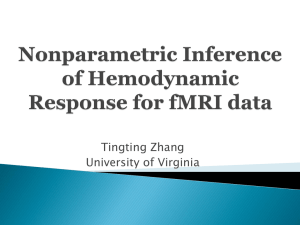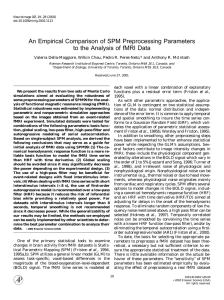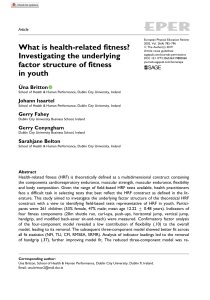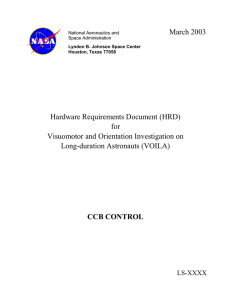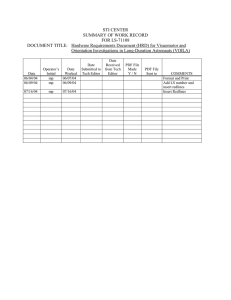POSTER (PowerPoint)
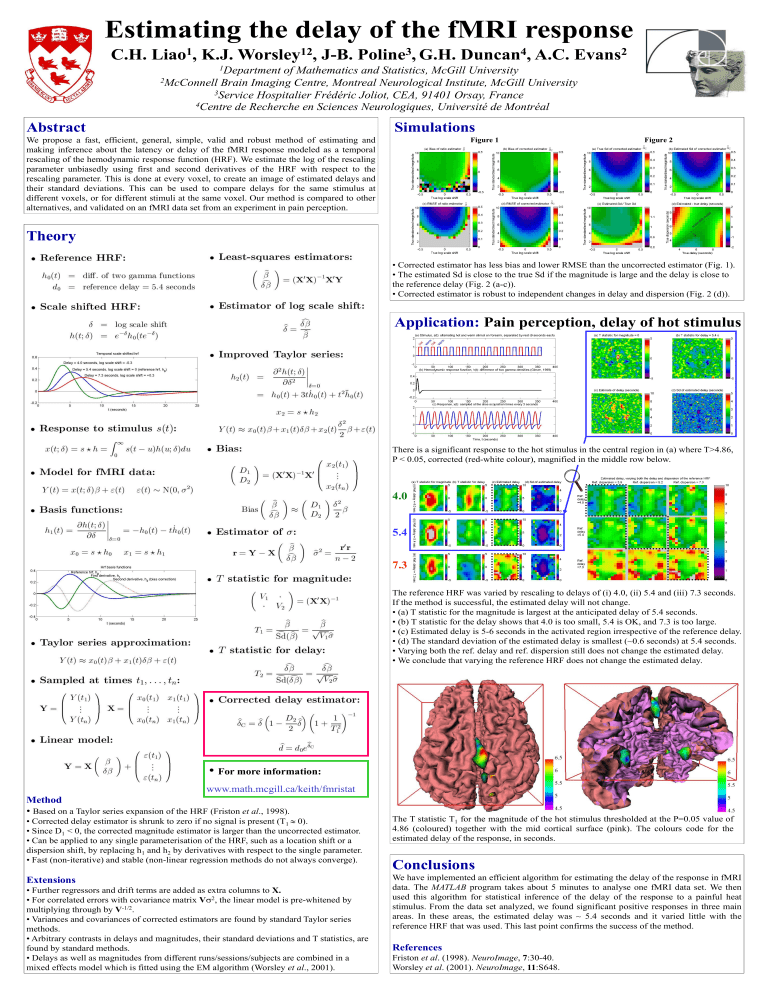
Estimating the delay of the fMRI response
C.H. Liao 1 , K.J. Worsley 12 , J-B. Poline 3 , G.H. Duncan 4 , A.C. Evans 2
1
Department of Mathematics and Statistics, McGill University
2
McConnell Brain Imaging Centre, Montreal Neurological Institute, McGill University
3
Service Hospitalier Frédéric Joliot, CEA, 91401 Orsay, France
4
Centre de Recherche en Sciences Neurologiques, Université de Montréal
Abstract
We propose a fast, efficient, general, simple, valid and robust method of estimating and making inference about the latency or delay of the fMRI response modeled as a temporal rescaling of the hemodynamic response function (HRF). We estimate the log of the rescaling parameter unbiasedly using first and second derivatives of the HRF with respect to the rescaling parameter. This is done at every voxel, to create an image of estimated delays and their standard deviations. This can be used to compare delays for the same stimulus at different voxels, or for different stimuli at the same voxel. Our method is compared to other alternatives, and validated on an fMRI data set from an experiment in pain perception.
Simulations
Figure 1 Figure 2
Theory
• Corrected estimator has less bias and lower RMSE than the uncorrected estimator (Fig. 1).
• The estimated Sd is close to the true Sd if the magnitude is large and the delay is close to the reference delay (Fig. 2 (a-c)).
• Corrected estimator is robust to independent changes in delay and dispersion (Fig. 2 (d)).
Application: Pain perception, delay of hot stimulus
There is a significant response to the hot stimulus in the central region in (a) where T>4.86,
P < 0.05, corrected (red-white colour), magnified in the middle row below.
4.0
5.4
7.3
The reference HRF was varied by rescaling to delays of (i) 4.0, (ii) 5.4 and (iii) 7.3 seconds.
If the method is successful, the estimated delay will not change.
• (a) T statistic for the magnitude is largest at the anticipated delay of 5.4 seconds.
• (b) T statistic for the delay shows that 4.0 is too small, 5.4 is OK, and 7.3 is too large.
• (c) Estimated delay is 5-6 seconds in the activated region irrespective of the reference delay.
• (d) The standard deviation of the estimated delay is smallest (~0.6 seconds) at 5.4 seconds.
• Varying both the ref. delay and ref. dispersion still does not change the estimated delay.
• We conclude that varying the reference HRF does not change the estimated delay.
•
For more information: www.math.mcgill.ca/keith/fmristat
Method
•
Based on a Taylor series expansion of the HRF (Friston et al ., 1998).
• Corrected delay estimator is shrunk to zero if no signal is present (T
1
0).
• Since D
1
< 0, the corrected magnitude estimator is larger than the uncorrected estimator.
• Can be applied to any single parameterisation of the HRF, such as a location shift or a dispersion shift, by replacing h
1 and h
2 by derivatives with respect to the single parameter.
• Fast (non-iterative) and stable (non-linear regression methods do not always converge).
Extensions
• Further regressors and drift terms are added as extra columns to X.
• For correlated errors with covariance matrix
V
2 , the linear model is pre-whitened by multiplying through by V -1/2 .
• Variances and covariances of corrected estimators are found by standard Taylor series methods.
• Arbitrary contrasts in delays and magnitudes, their standard deviations and T statistics, are found by standard methods.
• Delays as well as magnitudes from different runs/sessions/subjects are combined in a mixed effects model which is fitted using the EM algorithm (Worsley et al ., 2001).
The T statistic T
1 for the magnitude of the hot stimulus thresholded at the P=0.05 value of
4.86 (coloured) together with the mid cortical surface (pink). The colours code for the estimated delay of the response, in seconds.
Conclusions
We have implemented an efficient algorithm for estimating the delay of the response in fMRI data. The MATLAB program takes about 5 minutes to analyse one fMRI data set. We then used this algorithm for statistical inference of the delay of the response to a painful heat stimulus. From the data set analyzed, we found significant positive responses in three main areas. In these areas, the estimated delay was ~ 5.4 seconds and it varied little with the reference HRF that was used. This last point confirms the success of the method.
References
Friston et al . (1998).
NeuroImage , 7 :30-40.
Worsley et al . (2001).
NeuroImage , 11 :S648.
